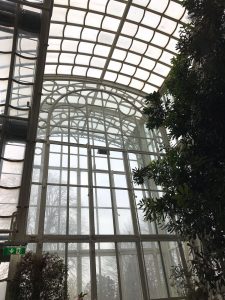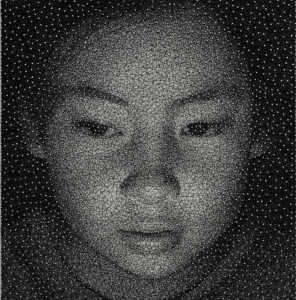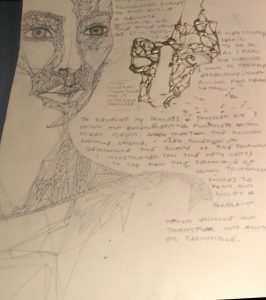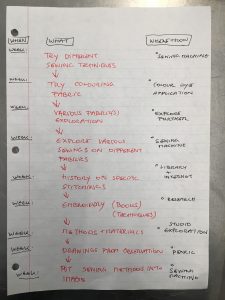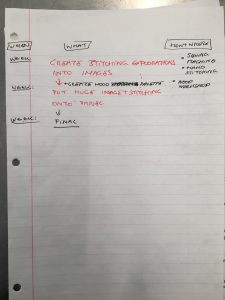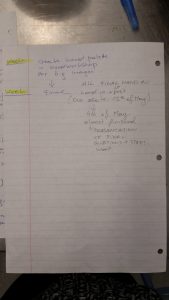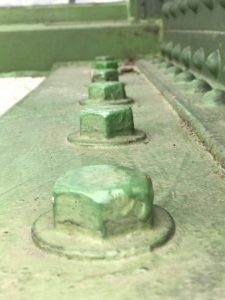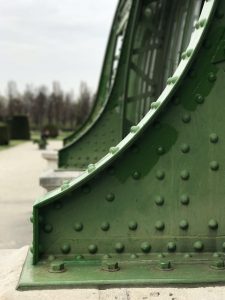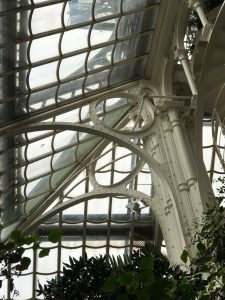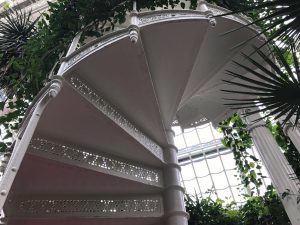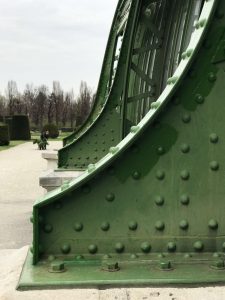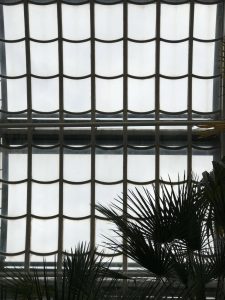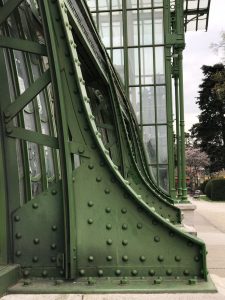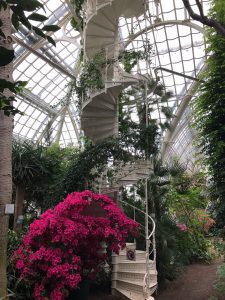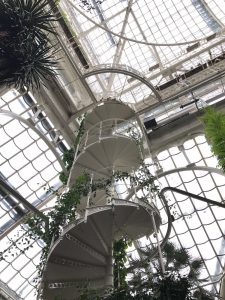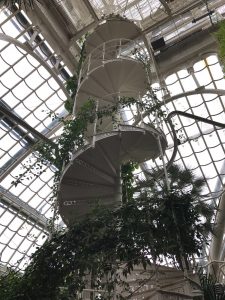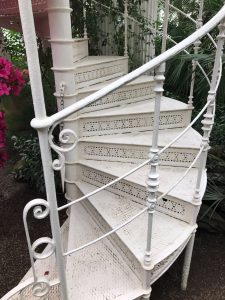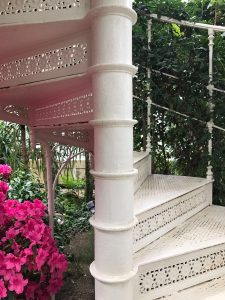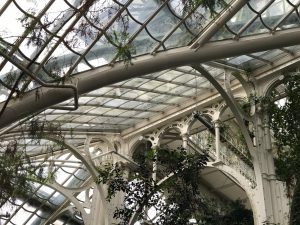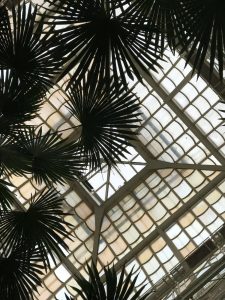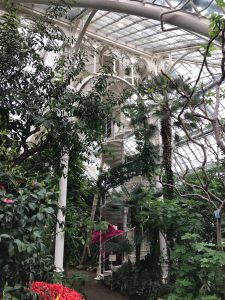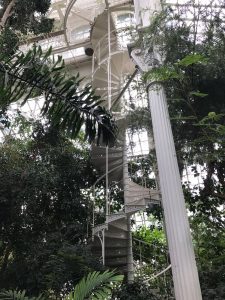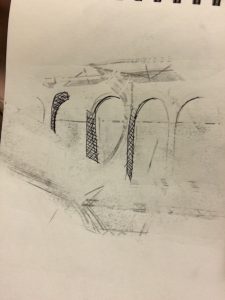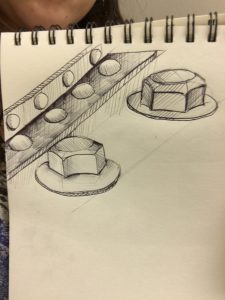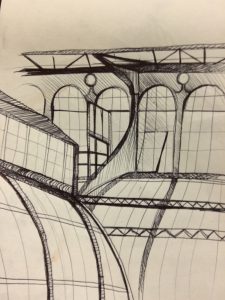Further development of project (research approach)
To further understand the structural aspect of a greenhouse and to further my observational study skills, I drew this analytical drawing from observing my photograph (I took – primary research- ).
It portrays one of the staircases inside the greenhouse, which simultaneously work as pillars, which makes them a structural aspect.
observational study:
I will foster my experimentation towards the construction of my final piece by brainstorming ideas to generate a dimensional piece. (hologram effect) upon my photographs, maybe using welding, thread and needles or 3d printing etc.
Firstly, I chose four of my various photographs, which struck me as particularly interesting, due to their composition and sense of depth. This is a vital feature when creating a holographic effect, as this aspect heightens the sensation of a 3D construction. (the 3d part ‘jumps’ at the viewer)
Chosen Photographs:
Research for 3D, Hologram effect
HOLOGRAM EXAMPLE: Lee Mcqueen generated a hologram for one of his shows for the label Alexander McQueen (video example here ). This research inspired me to create a sense of a holographic element for my final piece, as the translucency of the greenhouse’s glass elements reminded me of McQueen’s hologram. Therefore I thought it would be interesting to further develop and explore related explorations relevant to the idea of translucency and holograms.
This led me to think of the idea of creating an image out of thread at the end of a thin object, such as for example a stick or needle. When doing research on techniques to do so, I stumbled across the artist Kumi Yamashita.
Kumi Yamashita’s Thread portrait:
I explored the idea by creating a thread portrait drawing as well as an actual portrait using thread myself. I attempted the portrait from frontal perspective, yet switched to a profile view as it became increasingly unclear. However, I felt that this study was not as successful, as it was lacking in detail.
My Thread Portrait:
PLANNING MY FINAL PIECE:
I will construct a wood board which I shall later place my photograph onto. I will print this image using a high-resolution printer to ensure the image is of very high quality even on a large scale. I then will attach a metal piece onto the wood panel so that the piece can be hung up. Now I will stitch into the photograph at specific areas and attach it onto the wood panel. The next part involves me constructing a 3D printing file, after taking an orientation for it, which I shall take, and 3D printing a ‘real life ‘ version of the greenhouse metal parts seen in the photograph. This way they will reach out of the actual frame and create a holographic effect when placed upon the piece correctly. The final step necessitates me to install artificial lighting so that the 3D parts are lit in a manner that creates a ‘holographic shadow’, which creates the impact upon the audience, as it creates yet another dimensional layer.
As I started to build my final piece I felt it was not as successfull visually as I imagined, therefore I explored and brainstormed ideas of how to make it more impactuful. When doing so I looked and observed the Mcqueen hologram again. I realized the hologram was generated using glass-hence i felt i should create a sense of glass within my exploration too. This led me to think of plenty ideas of how to incorporate this factor within my piece as it is a crucial part to a holographic image. Yet due to limitation in time, I could not fabricate a full functioning hologram, hence I decided to alter my idea and rather then creating a full fletched hologram, create the illusion of one. This i achieved by placing a mirror onto a wood pannel, and placing a 3D print on top of it, then connecting part to the greenhouse skeleton with its reflection using thread- this way i created an optiocal illusin, in which a sort of sense of an alternet reality is given. This is due to the second half of the greenhouse not being present yet feeling as if so. Furthermore, the mirror reflects not only the greehouse skeleton but also its audience, hence the person(s) observing the structure seem as if trapped inside- which is an homage to a real hologram, in which the light reflection is capture within the glass construction. (like the woman in the hologram for mcqueen). I first created a mini version so that I could explore the idea in a functional manner, and also to check which materials wozld work.



